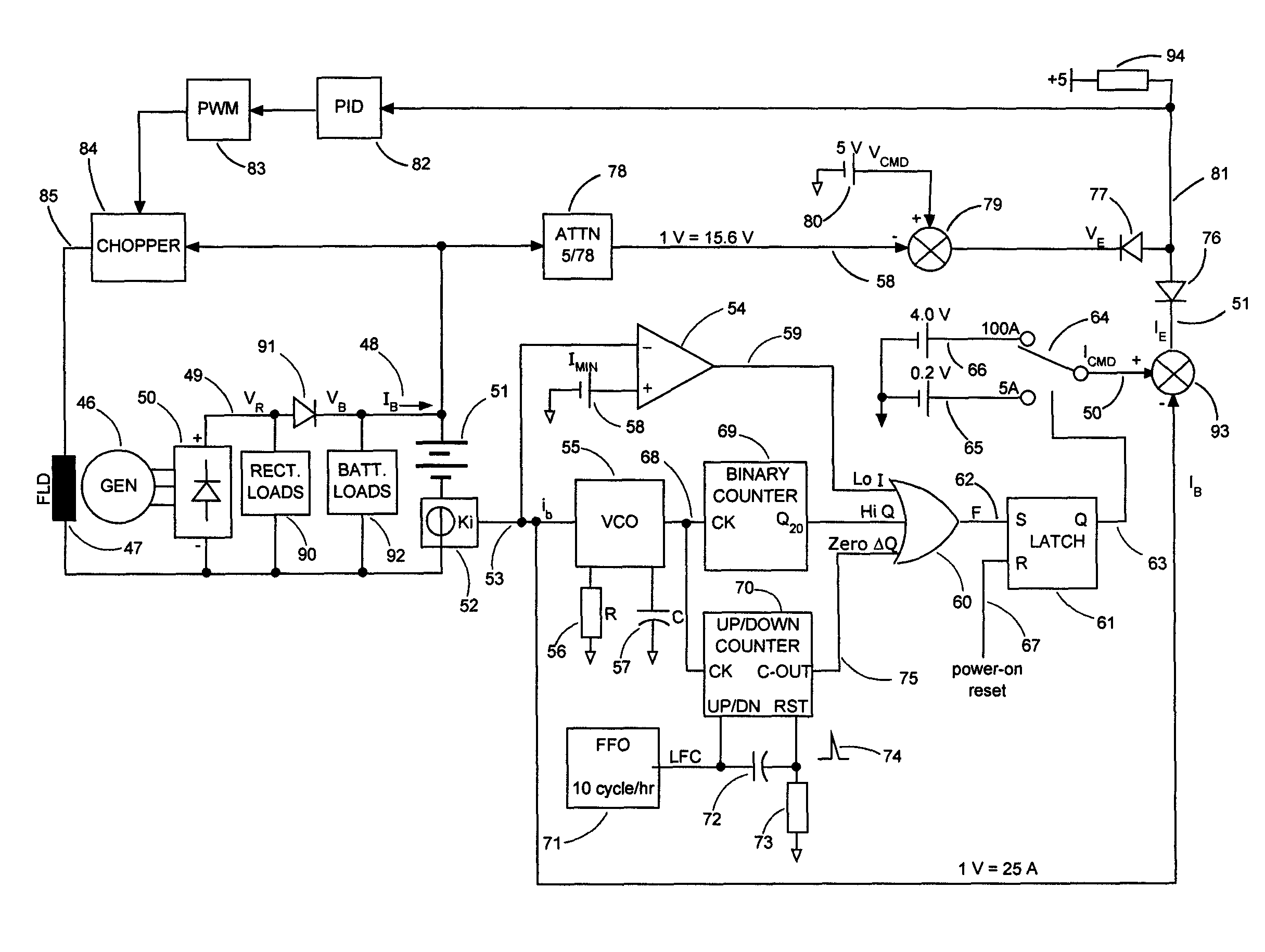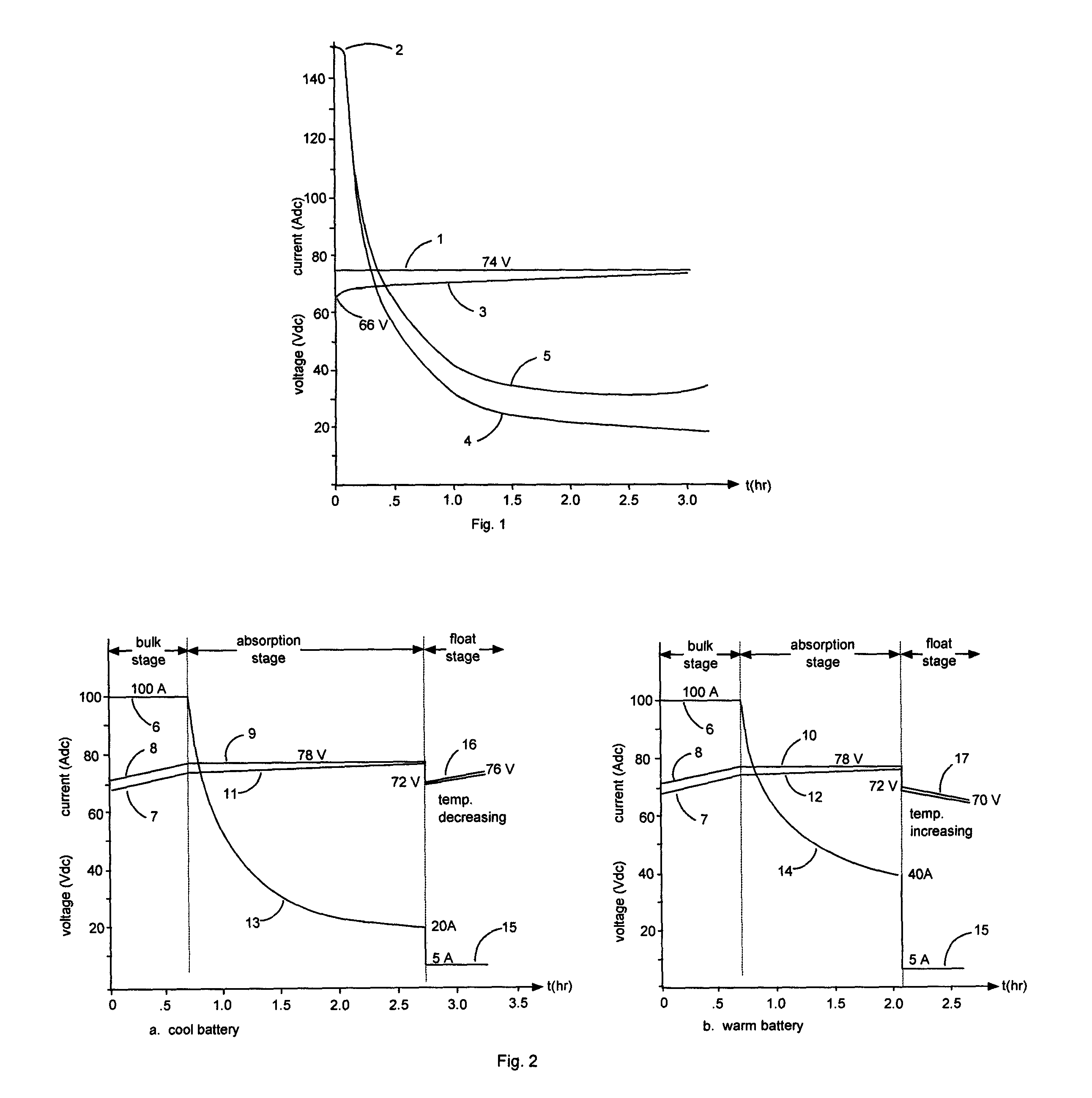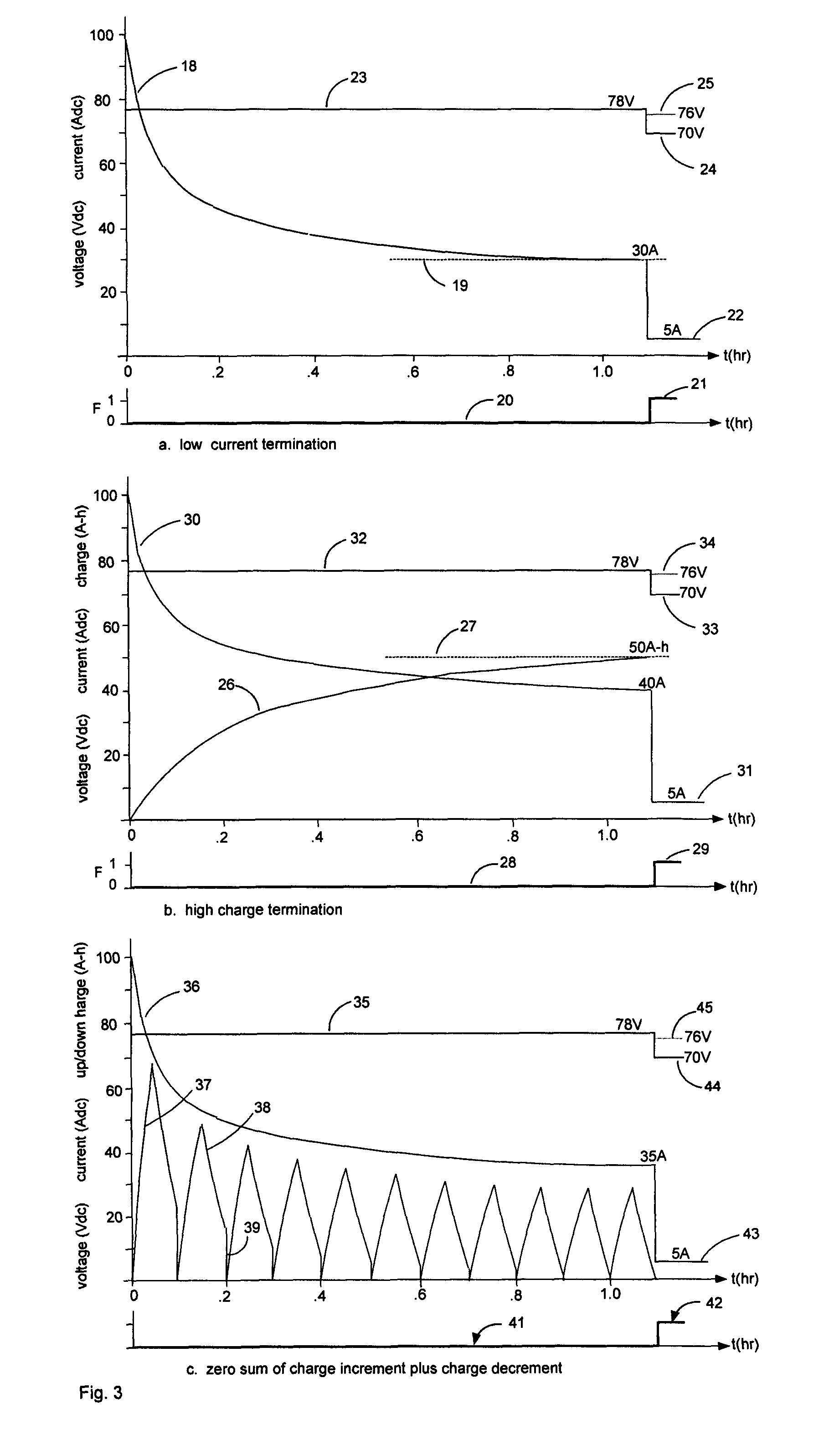Battery charging method and system with three-stage temperature-compensated charge profile
a battery and charge profile technology, applied in the field of battery charging, can solve problems such as risk of thermal runaway, and achieve the effect of avoiding excessive water consumption and maximizing the conversion of active materials
- Summary
- Abstract
- Description
- Claims
- Application Information
AI Technical Summary
Benefits of technology
Problems solved by technology
Method used
Image
Examples
Embodiment Construction
[0028]The present three-stage temperature-compensated charge profile, which is particularly well-suited for use with flooded or valve-regulated lead-acid batteries used in locomotives, is illustrated in FIGS. 2a and 2b, which depict charge voltage vs. time for a cool and a warm battery, respectively. The charge profile progresses through ‘bulk’, ‘absorption’ and ‘float’ stages. During the ‘bulk stage’, the charger regulates the charge current (6) to a predetermined percentage of the battery's amp-hour (A-h) capacity. Note that the various values and percentages provided in the following description and the accompanying figures are merely exemplary. For purposes of illustration, a 500 A-h battery suitable for use in a locomotive is assumed, and the various values and percentages specified in the description and figures are typical for such an application. Note, however, that different values and percentages might be appropriate, depending on the specific battery and application. Also...
PUM
 Login to View More
Login to View More Abstract
Description
Claims
Application Information
 Login to View More
Login to View More - R&D
- Intellectual Property
- Life Sciences
- Materials
- Tech Scout
- Unparalleled Data Quality
- Higher Quality Content
- 60% Fewer Hallucinations
Browse by: Latest US Patents, China's latest patents, Technical Efficacy Thesaurus, Application Domain, Technology Topic, Popular Technical Reports.
© 2025 PatSnap. All rights reserved.Legal|Privacy policy|Modern Slavery Act Transparency Statement|Sitemap|About US| Contact US: help@patsnap.com



